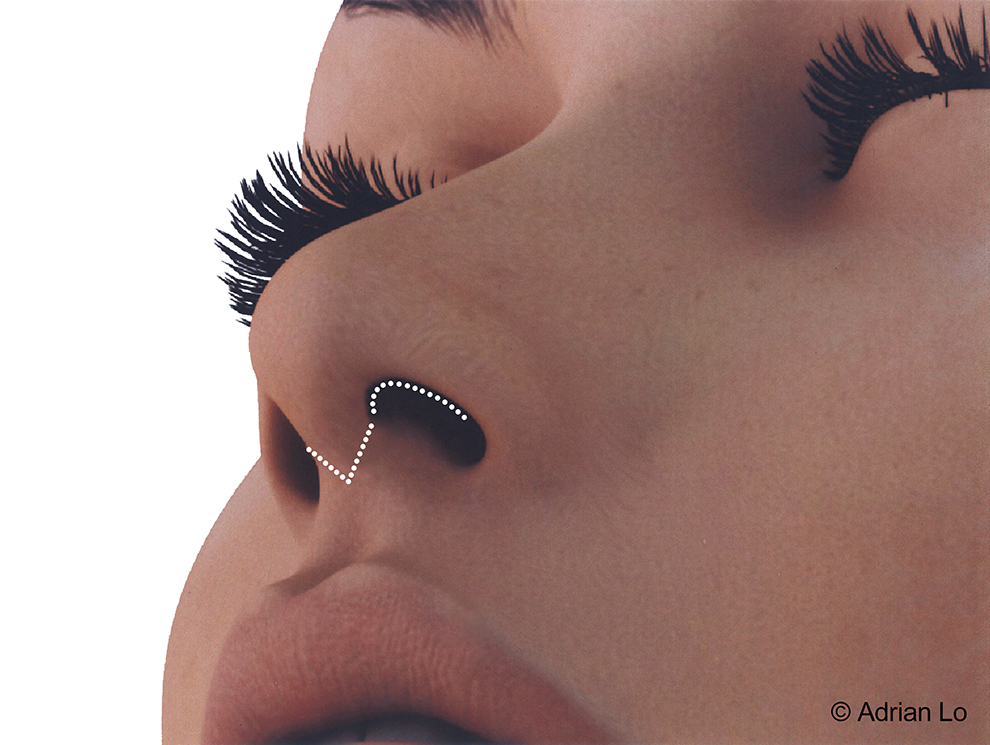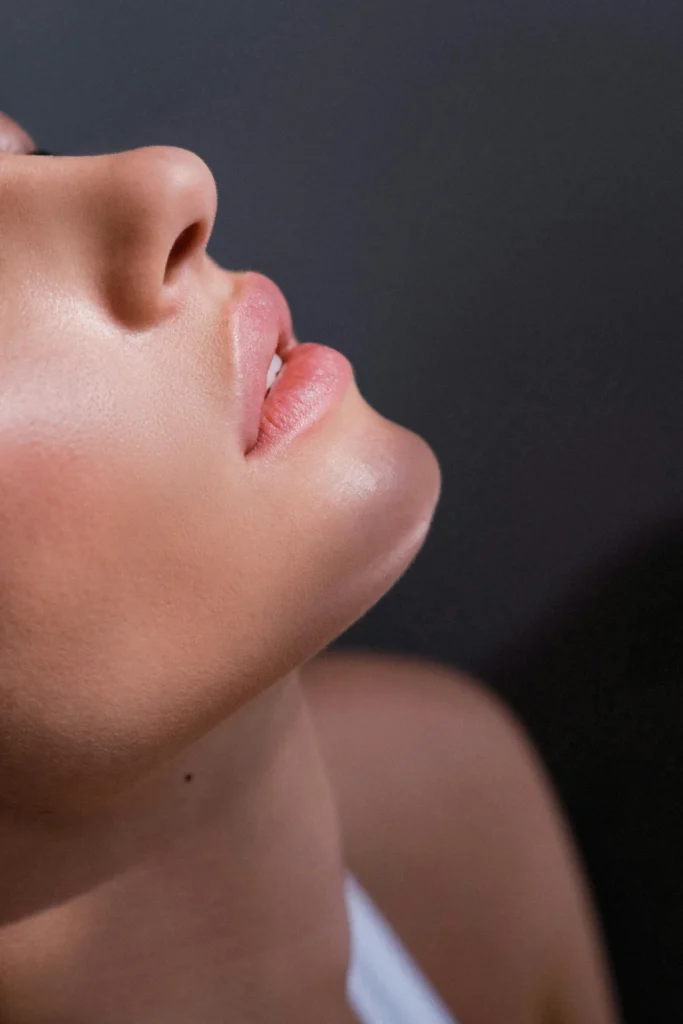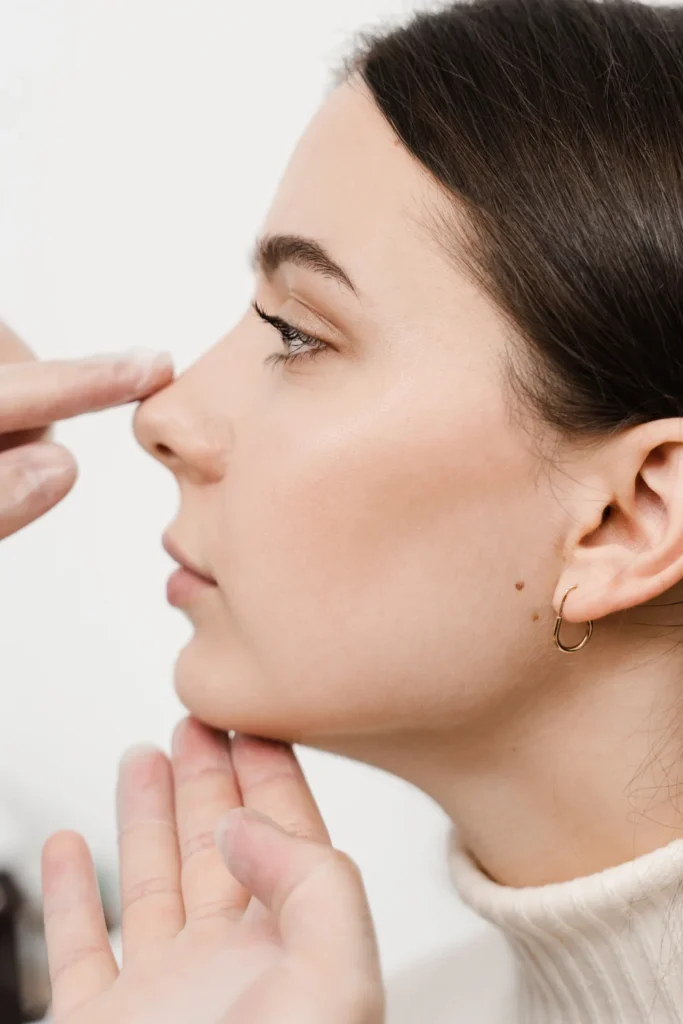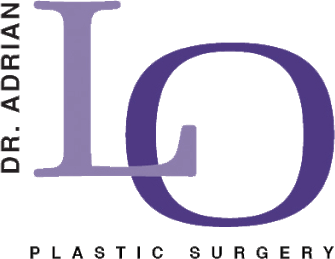Successful nose surgery or rhinoplasty recovery time depends on following aftercare protocols carefully during each healing phase.
Some patients may underestimate the commitment required for optimal results. Your nose will undergo dramatic changes over 6 to 12 months after surgery, making proper recovery planning essential for achieving your aesthetic goals.
Recovery from nose surgery requires your attention to your plastic surgeon’s instructions. The healing process is divided in distinct phases, each requiring specific care protocols.
Understanding nose surgery or rhinoplasty recovery time expectations helps you prepare physically, mentally and logistically for the journey ahead.
Learn About: What is Recovery Like After Breast Reduction Surgery?
Types of Nose Surgery or Rhinoplasty Techniques
Open rhinoplasty involves making an incision or cut across the columella in addition to cuts inside the nose. The columella is the strip of tissue between your nostrils.

Open procedures provide better visibility for complex reshaping work. The rhinoplasty recovery time for open procedures typically involves more swelling and longer healing periods.
Closed rhinoplasty keeps all incisions or cuts inside the nose. No external incisions are visible. This approach results in less visible scarring and often shorter rhinoplasty recovery time. Your plastic surgeon will determine which technique best suits your specific needs and aesthetic goals.
Revision rhinoplasty addresses issues from previous nose surgery. These procedures often require longer healing periods due to scar tissue from the original surgery and more postoperative swelling. The rhinoplasty recovery time may be longer than the original rhinoplasty procedure.
Anesthesia Options for Nose Surgery
General anesthesia is most commonly used for rhinoplasty procedures. You will be completely asleep during surgery. Surgery typically lasts one to three hours. Recovery from general anesthesia adds to your initial post-operative period.
Local anesthesia with sedation may be used for minor nose procedures. Patients remain partially conscious but comfortable during surgery.
Recovery from local anesthesia allows for faster initial awakening but still requires careful postoperative monitoring.
The type of anesthesia affects your immediate recovery experience. General anesthesia may cause temporary grogginess and nausea. Local anesthesia allows for quicker alertness after surgery. Your plastic surgeon will discuss the best anesthesia choice based on your procedure complexity.
Typical Duration of the Nose Surgery
Most rhinoplasty procedures take between one to three hours to complete. Simple tip refinements may require less time. Complex reconstructions take longer. The surgical duration can correlate with rhinoplasty recovery time.
Several factors affect surgery length. Individual anatomy, extent of changes planned and revision status all impact the length of rhinoplasty surgery. Your plastic surgeon will assess your individual situation and will provide a surgery time estimate during your consultation.
Planning adequate recovery time is important irrespective of the surgical duration. Even shorter procedures require the same careful attention as longer surgeries to rhinoplasty aftercare tips for optimal healing.
Immediate Recovery After Nasal Surgery

Hospital Stay Guidelines
Most rhinoplasty procedures are performed on an outpatient basis. You will spend several hours in recovery before discharge. Medical staff monitor your initial healing during this time. Some complex cases may require overnight observation.
Arrange for someone to drive you home after surgery. You cannot operate vehicles for at least 24 hours following anesthesia. Important decisions should be avoided during this period. Having support during the first few days significantly improves your recovery experience.
Plan to rest at home for the first week after surgery. Some patients may underestimate how long does rhinoplasty take to heal. Returning to activities too quickly can compromise results.
Initial Pain Management Strategies
Managing pain after rhinoplasty involves both medication and comfort measures. Your plastic surgeon will prescribe appropriate pain medications for the first few days. Take medications as directed to stay ahead of discomfort.
Ice packs help reduce swelling and provide pain relief during the first 48 hours. Apply ice for 15 to 20 minutes every hour as tolerated. Direct ice contact with your skin should be avoided to prevent tissue damage.
Keep your head elevated at 45 degrees while sleeping and resting. Use multiple pillows or a reclining chair to maintain proper positioning. Elevation reduces swelling and improves comfort during the initial rhinoplasty healing stages.
Importance of Rest and Relaxation
Rest remains important during the first few days after surgery however early ambulation is necessary. All strenuous activities should be avoided. Household chores must wait. Lifting anything over five pounds is prohibited. Your body needs energy to focus on healing.
Sleep quality affects your recovery speed and comfort level. Create a comfortable environment with proper head elevation and easy access to medications and water. Consider sleeping in a recliner if bed positioning proves difficult.
Stress can interfere with healing and increase swelling after rhinoplasty. Practice relaxation techniques. Listen to calming music. Engage in gentle meditation to promote better recovery.
First Week After Nose Surgery
Managing Swelling and Bruising
Swelling after rhinoplasty peaks around day three. A gradual decrease occurs over two weeks. Some minor swelling may persist for months, particularly in the tip area. Understanding the timeline helps manage expectations during the rhinoplasty healing stages.
Bruising around the eyes is common. Resolution typically occurs within 7 to 10 days. The extent of bruising varies among patients and does not indicate surgical complications. Gentle makeup application can camouflage bruising once your plastic surgeon approves. Your plastic surgeon may recommend taking arnica tablets and using arnica cream to decrease bruising and swelling.
Activities that increase blood flow to your face should be avoided. Bending over can worsen swelling. Vigorous movement prolongs the recovery period. These restrictions are temporary but important.
Proper Use of Ice Packs
Ice application during the first 48 hours or longer significantly reduces swelling and discomfort. Use frozen peas or gel packs wrapped in a thin cloth to protect your skin. Apply ice for 15 to 20 minutes every hour while awake.
Focus ice application on the areas around your eyes rather than directly on your nose. The nasal area remains sensitive after surgery and requires gentle treatment. Cold therapy becomes less effective after the first 3 to 4 days.
Diet Recommendations for Healing
Proper nutrition supports healing and reduces complications during rhinoplasty recovery time. Your dietary choices directly impact recovery speed and comfort levels.
Recommended healing foods include:
- Lean proteins like chicken, fish, and eggs for tissue repair
- Fresh fruits and vegetables for vitamins and antioxidants
- Whole grains for sustained energy during recovery
- Low-sodium options to minimize fluid retention
Foods to avoid during early recovery:
- Hard or crunchy items that require extensive chewing
- Spicy foods that may increase facial flushing
- Alcohol which can interfere with healing
- High-sodium processed foods that promote swelling
Activity Restrictions During Rhinoplasty Recovery

Avoiding Physical Exertion
Strenuous exercise must be avoided for at least two weeks after rhinoplasty. Activities that raise your heart rate and blood pressure can increase swelling and bleeding risk. Running, weightlifting, and high-impact sports fall into this category.
Light walking is encouraged after the first few days to promote circulation and prevent blood clots. Start with short distances and gradually increase as tolerated. Listen to your body and rest when needed.
Return to full exercise gradually, starting with low-impact activities after two weeks. Your plastic surgeon will provide specific guidelines based on your healing progress and procedure complexity.
Guidelines for Sneezing and Coughing
Sneezing and coughing can create pressure that affects your healing nose. Managing these natural reflexes protects your surgical results.
Safe techniques for sneezing and coughing:
- Sneeze with your mouth open to reduce nasal pressure
- Support your nose gently with clean tissues when coughing
- Take allergy medications to prevent excessive sneezing
- Use saline rinses as recommended by your plastic surgeon
Forceful nose blowing must be avoided for several weeks after surgery. If you must clear your nose, do so very gently with one nostril at a time.
Consider preventive measures if seasonal allergies typically affect you. Preventing excessive sneezing and congestion supports better healing and improved comfort during rhinoplasty recovery time.
Limits on Driving and Operation of Machinery
Driving should be avoided while taking prescription pain medications. These medications can impair judgment and reaction times. Most patients can resume driving within a few days once they discontinue pain medications and feel alert.
Heavy machinery operation should be avoided during the first week of recovery. Your depth perception and reflexes may be affected by medication, swelling, or general discomfort from surgery.
Plan alternative transportation for follow-up appointments and important errands during the first week. Having reliable transportation arrangements reduces stress and ensures you attend important post-operative visits.
Long-Term Recovery and Care
Timeline for Swelling Reduction
Major swelling typically subsides within the first month. Subtle swelling can persist for up to a year. The nose tip often takes the longest to fully refine, with final results visible around 12 to 18 months after surgery.
Weekly progress photos help track your healing journey and document improvements. Share these images with your plastic surgeon during follow-up appointments to monitor your progress effectively.
Patience remains important during the long-term healing process. Many patients become concerned about results during the early weeks when swelling obscures the final outcome.
Signs of Complications to Watch For
Contact your plastic surgeon immediately if you experience any concerning symptoms. Early recognition of complications prevents serious problems from developing.
Warning signs requiring immediate medical attention:
- Excessive bleeding that soaks through dressings repeatedly
- Signs of infection include fever, increasing pain, or unusual discharge
- Severe breathing difficulties beyond normal congestion
- Sudden onset of severe headaches or vision changes
- Unusual warmth or redness around the surgical site
Some minor bleeding and discomfort may be normal during the first 1 to 3 weeks. However, persistent heavy bleeding requires prompt medical attention.
Breathing difficulties beyond normal post-operative congestion may indicate complications. Some nasal stuffiness is expected during rhinoplasty healing stages. Severe breathing problems require immediate evaluation by your plastic surgeon.
Follow-Up Appointments with Your Surgeon
Attend all scheduled follow-up appointments, even if you feel your recovery is progressing well. Your plastic surgeon needs to monitor healing, remove sutures, and address any concerns that arise.
Bring a list of questions to each appointment to maximize the value of your visits. Topics might include activity restrictions, makeup application, or timeline expectations for your specific case.
Post-operative care for rhinoplasty includes long-term monitoring even after initial healing appears complete. Some patients require minor adjustments or additional guidance months after surgery.
Lifestyle Changes After Rhinoplasty

Avoiding Smoking and Alcohol
Smoking significantly impairs healing and increases the risk of complications. Nicotine restricts blood flow to healing tissues. This restriction can potentially compromise your surgical results. Complete smoking cessation remains important for optimal recovery. Patients are required to stop all nicotine products for at least 2 weeks prior to surgery and throughout the recovery period.
Alcohol consumption should be minimized during recovery, particularly while taking prescription medications. Alcohol can increase bleeding risk and interfere with proper healing processes.
If you struggle with tobacco or alcohol cessation, discuss support resources with your plastic surgeon. Successful lifestyle changes contribute significantly to better surgical outcomes.
Incorporating Gentle Exercise
Begin with gentle walking as soon as you feel comfortable, typically within a few days of surgery. Gradual activity increase prevents over-exerting yourself and causing nasal discomfort and swelling.
Yoga and stretching can be beneficial once approved by your plastic surgeon, typically after two weeks. Inverted poses or positions that increase facial blood flow should be avoided during early recovery.
Swimming should be avoided until your plastic surgeon confirms complete healing of all incisions. Pool chemicals and bacteria can increase infection risk during the vulnerable healing period.
Skin Care Post-Surgery
Gentle cleansing around the surgical area prevents infection while avoiding disruption to healing tissues. Use mild, fragrance-free cleansers. Scrubbing or rubbing the nose area should be avoided. The inside of your nostrils may be kept clean with moistened cotton tip applicators and the use of nasal saline sprays.
Sun protection becomes particularly important during recovery, as healing skin is more susceptible to damage and pigmentation changes. Apply broad-spectrum sunscreen and wear protective hats when outdoors.
Moisturizing the skin around your nose helps prevent dryness and irritation. Choose gentle, hypoallergenic products recommended by your plastic surgeon for post-operative use.
Emotional Aspects of Recovery
Managing Expectations for Results
Understanding that final results take time helps manage expectations during early recovery phases. Swelling and bruising can make your nose appear different from the intended outcome initially.
Review before and simulated after photos from your consultation to remind yourself of planned changes. Comparing your healing progress to these images provides perspective on your recovery journey.
Communicate openly with your plastic surgeon about concerns or questions regarding your results. Professional guidance helps distinguish between normal healing variations and potential issues.
Coping with Mood Swings
Emotional fluctuations are common during recovery from any surgical procedure. Several factors contribute to mood changes. Medications can affect emotions. Discomfort influences mood stability. Appearance changes create emotional responses.
Maintain social connections with friends and family who provide emotional support. Isolation can worsen mood changes and make recovery feel more challenging than necessary.
Consider professional counseling if emotional difficulties persist beyond the first few weeks. Mental health support contributes to overall recovery success and long-term satisfaction.
Importance of Mental Health Support
Recovery involves both physical and emotional healing processes. Acknowledging the psychological aspects of cosmetic surgery helps prepare for a more complete recovery experience.
Set realistic timeline expectations and focus on gradual improvements. Having a positive mindset reduces stress and supports better overall healing.
Celebrate small milestones during recovery, such as reduced swelling or returning to normal activities. Positive reinforcement supports mental well-being throughout the healing process.
Get Expert Guidance for Your Rhinoplasty Recovery with Dr. Adrian Lo
Dr. Adrian Lo provides comprehensive rhinoplasty recovery time guidance to patients throughout Pennsylvania, New Jersey, and Delaware. His personalized approach ensures each patient receives specific rhinoplasty aftercare tips tailored to their unique needs and procedure complexity.
Contact Dr. Adrian Lo’s practice today to book your consultation. Learn more about the recovery process and receive expert guidance for your surgical journey so you can feel confident and prepared for your healing timeline.
